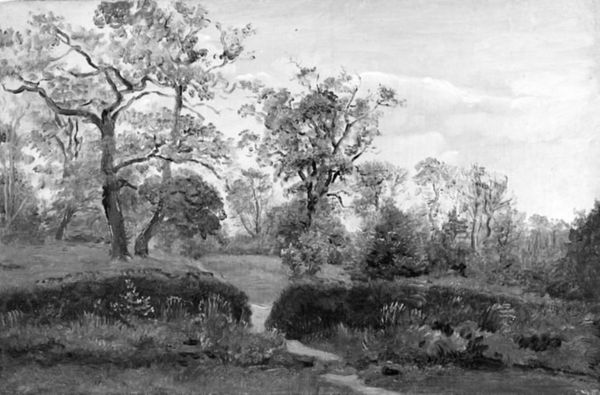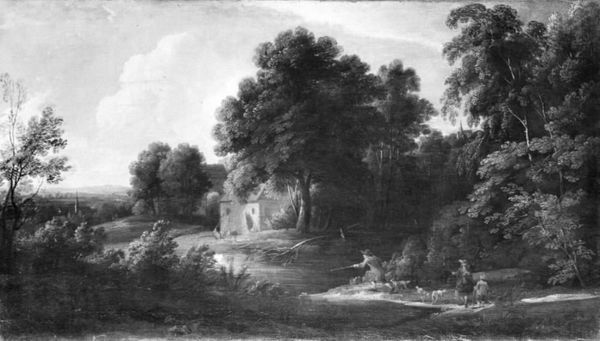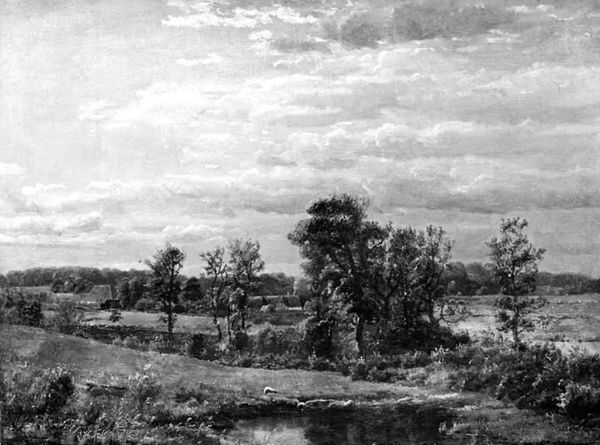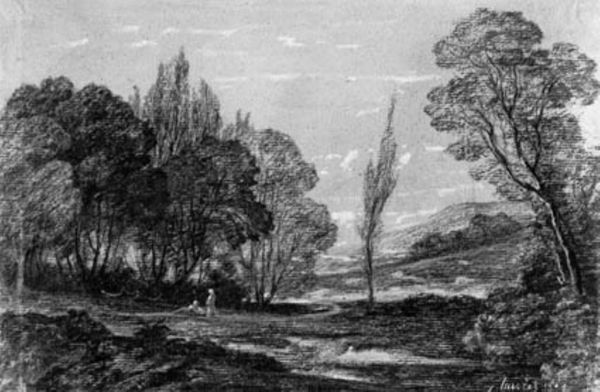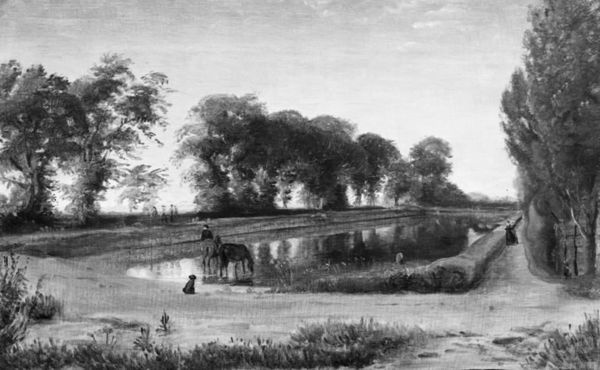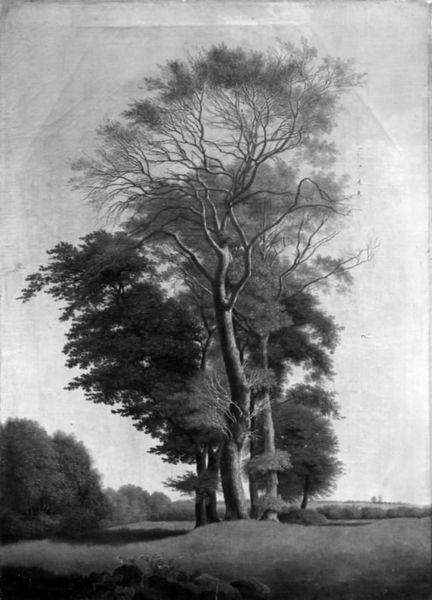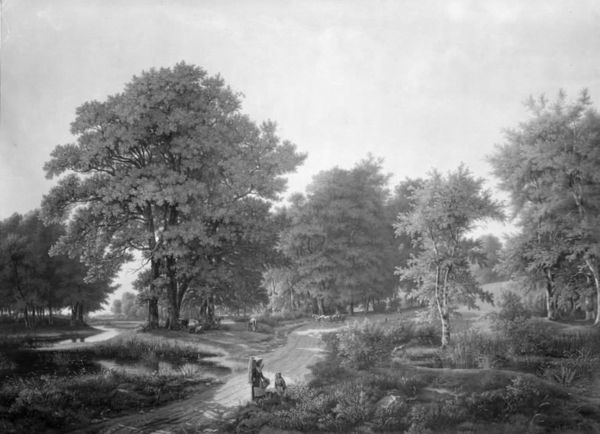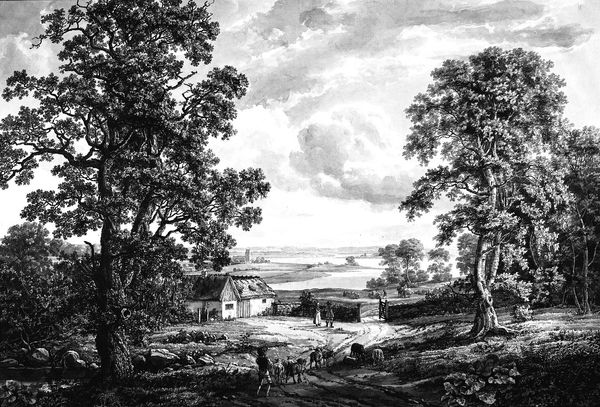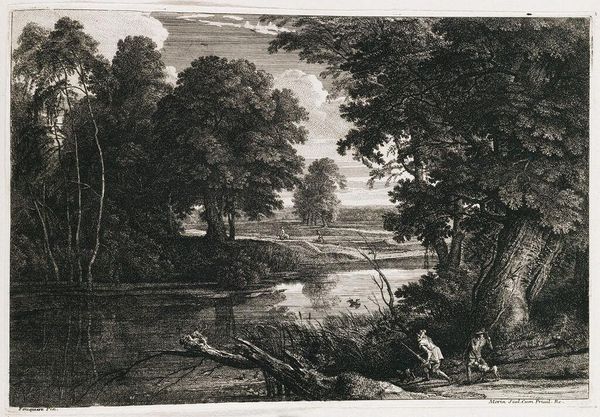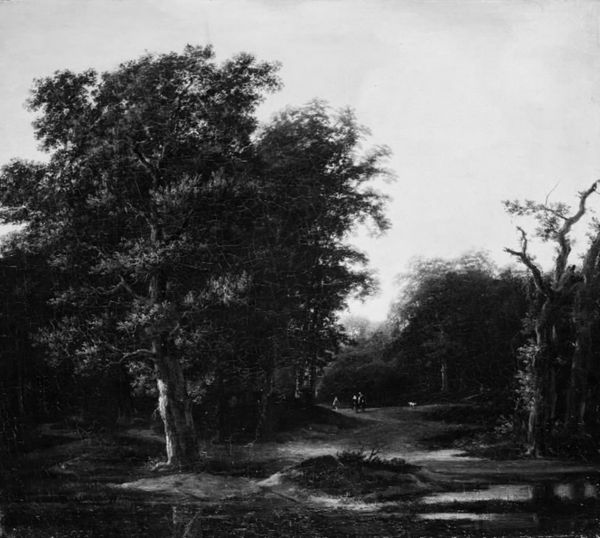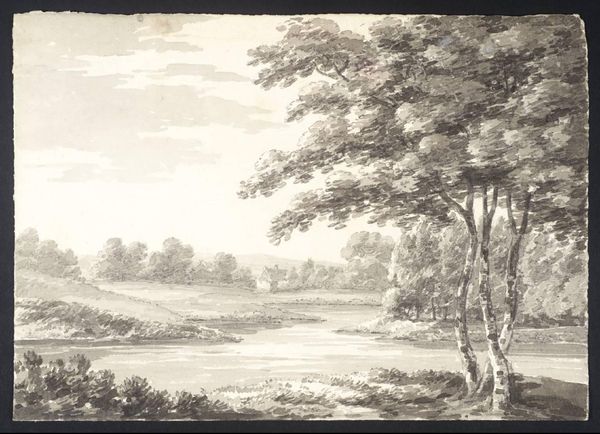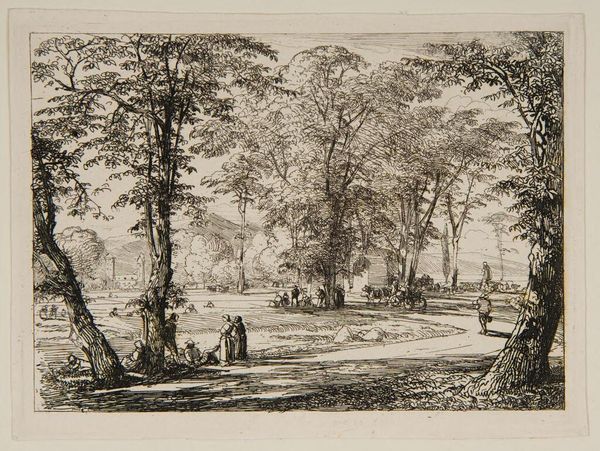
painting, oil-paint
#
painting
#
oil-paint
#
landscape
#
romanticism
Dimensions: 23 cm (height) x 28 cm (width) (Netto)
Editor: So here we have Dankvart Dreyer's "Landscape near Hammermøllen. Study," an oil painting from 1843. It has such a serene quality, almost dreamlike. There is a road that gently curves away from us between trees, drawing us deeper into the scene. How do you interpret this work? Curator: That's a lovely initial observation. Dreyer painted this during the Danish Golden Age, a period rife with nationalist sentiments intertwined with art. Consider the landscape itself – it wasn't just scenery; it became a symbol of cultural identity, reflecting the longing for a unified, independent Denmark amidst political turmoil. How do you see the romanticism influencing the natural setting? Editor: I guess I can see how the emphasis on the beauty of nature makes a political statement in some way, an ode to national pride. But that would make me wonder, is there perhaps an argument here about environmental preservation and the cost of progress? Curator: Absolutely. You are correctly beginning to engage with the multiple layers of meaning in Romanticism. This landscape may reflect the emergence of ecological consciousness. The burgeoning industrial revolution began disrupting the pristine landscapes artists like Dreyer celebrated. It invites us to consider issues such as resource management, land rights, and social justice in a rapidly changing world. The painting can therefore function as a protest. What might the absence of people in this landscape suggest? Editor: Maybe it emphasizes the purity of nature, unburdened by human impact. I suppose you could say it serves as both a celebration and a warning. I had never considered that landscape paintings could speak to contemporary concerns. Curator: Precisely! By understanding its historical and social context, Dreyer’s landscape allows us to appreciate the intersection of art, identity, and political advocacy. Perhaps even motivating activism to conserve such views for everyone. Editor: I'll definitely see landscape art differently from now on. Thanks for sharing this interpretation!
Comments
No comments
Be the first to comment and join the conversation on the ultimate creative platform.
